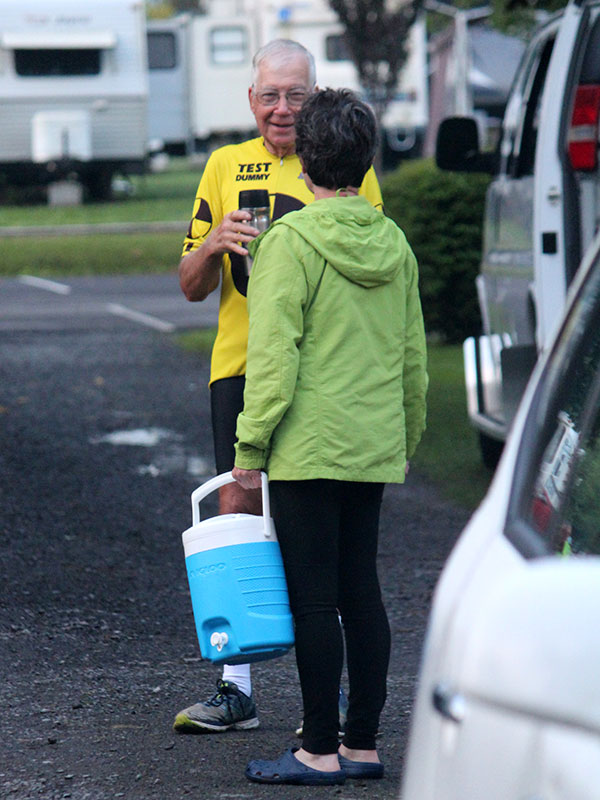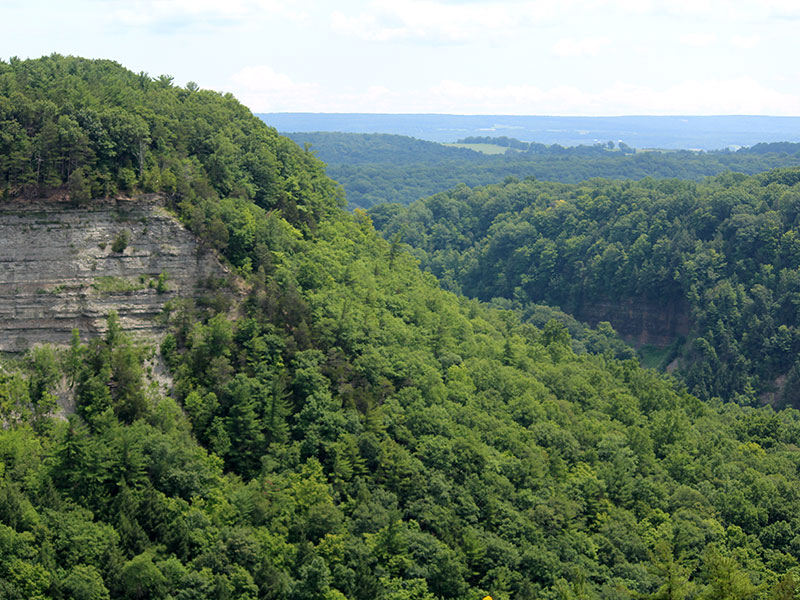
FANY–500 miles across New York,
2018 trip review
by Angela Crow, 2019







From 2001 until the pandemic, the FANY ride offered a challenging, small (limited to 200 riders) ride across New York five hundred miles, with seven over night stays typically at local public schools.
People who try to create routes for bicyclists often struggle with a range of challenges that come from trying to design a pop-up infrastructure within existing car-centric design, and having relied on many other people’s routes in the past, I appreciated the care in the routes for this ride when we tried it in 2018. While I came to expect that our route director would always choose tough hills over flatter routes, I also understood that she would not give us dangerous down hill rides. The roads were fun and as safe as roads can be in the states. When busy roads were chosen, it was for an obvious purpose: people on the ride wanted to include winery visits, so some of our routes were on the busy roads where these businesses were located.
We had never tried a small ride, and I think the unpredictably hard part (besides the hills) was the fact that we needed to find our own rest stops. That sounds silly, but given our personalities, we learned that if someone else determines the time of a rest stop, we would stop at each stop, appreciating the chance to rest / fuel up / use the bathroom. On this ride, left to our own devices, we took far fewer chances to rest and fuel up which affected our energy levels.
As someone who has experience mostly with larger rides, where you have the luxury of vendors and bike shops fixing bicycles at each over night, it never occurred to me that I would need to visit local town bicycle shops if I had a problem with my bike. I also never thought much about the luxury of a rest stop, but both of these services are hard for a small ride to organize.
In 2018, the ride was physically challenging. While the trip organizers offered the option of signing up ahead of time for a shortened ride (hitching bikes to the SAG car), we like to ride without bothering coordinators. I prefer a shorter route option integrated into the day’s ride. In the 2019 routes for this ride, a 50 and 70 mile option were offered, a better solution to differing desires for distance.Because it was a tough ride, and we were in okay (but not great) shape, we took our time, walked our bikes up several hills and had plenty of time to look around us and gather a familiarity with the landscape and the kinds of farms that populated our ride across the state. If we were not seasoned riders, with a clear sense of our limits, we would have struggled on this ride.
While the FANY ride no longer exists, small rides do. If you like to see other riders, or if you don’t enjoy riding alone, and you’re on a ride of under 200 participants, you will want to find a friend who rides at your pace.
We know what paces we can handle. Typically on a ride like this, you’ll encounter a range of riders. The terrain, in some respects, helps to predict the riding population. Some people will inevitably choose a ride because of location — they live in the state, or they have a reason to go there. More people who are familiar with multiple day rides will opt into or out of a ride based on their assessment of difficulty. We were riding with people who were in great shape, having opted into a more challenging ride.
If you ride at the pace of the big group, on a ride that moves across a state, you probably have a group of riders around you for much of the day; if you’re riding at a slower pace, you’ll probably ride it on your own unless you and a friend agree to ride together, choosing a pace both of you can enjoy.
If you look at a multiple day ride and the elevation shifts, you can decide whether you’re facing a tough or relatively easy ride. If you see a lot of hills, and you’ve never been on a multiple day ride, you’ll want to either find a trainer who can plot out a schedule with you for getting in shape or read through advice from on line resources and develop your own training schedule.
We found this ride and this community friendly even though we didn’t opt into the evening meals (typically served in the school cafeteria and catered by a local restaurant). Had we taken our nightly meal with the group, we might have felt more a part of the community. If you’re a person who enjoys a multiple day tour, and you don’t want the big noise of a larger group, but you do want someone else to take care of the details — the route, your luggage, the accessibility to showers, etc., a small ride is refreshing and a stark contrast to a ride of over a thousand participants.
Bottom line features —
Ride organization: predictable (a good thing!): 85%
Price: 400 (Pre-Pandemic State rides range between $175 and $1200)
Weather: Mild Summer temps? (hot but not Georgia hot!)
Quality of roads | car traffic | safety: Pretty good for the States — 80%
FANY AMENITIES:
Route — A marked route (GPS, Marked signs on the road)
Sag Support: vehicles on the route, providing help for riders in difficulty
Overnight Camping/Showers: Outside tent camping for 7 nights with warm showers from the gym at the school or portable showers.
FANY Add Ons:
Tent service (pre-pandemic $550 for two), a pitched tent, air mattresses, luggage delivery, coffee, chair and charging station for electronic devices.
Food facilitation: catered breakfast and dinners on campus — pay in advance requirement
Rest stops: bike route designed for finding rest stops with toilets with some frequency.
Towel Service: for a fee, a clean towel provided each evening.